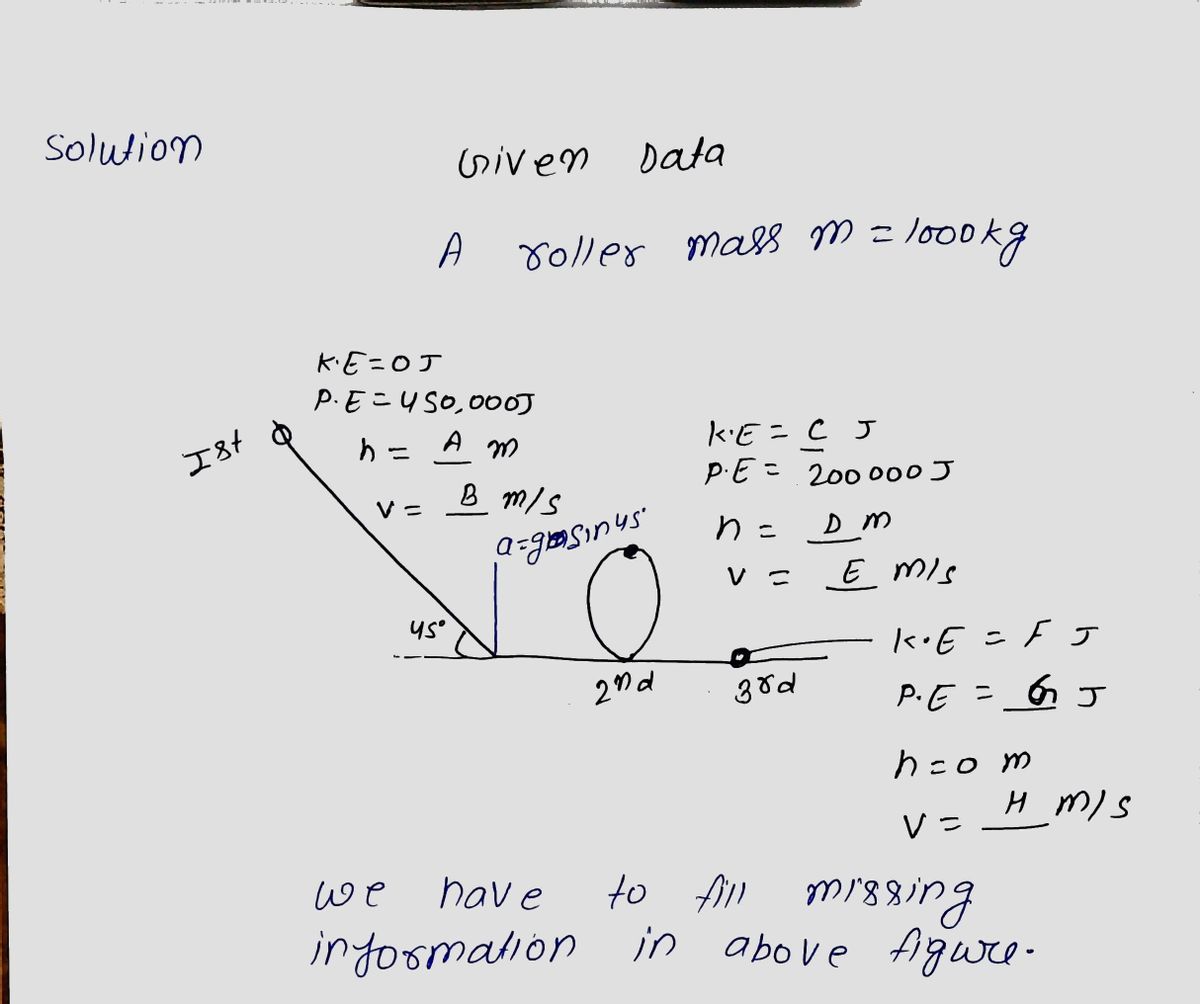The figure below shows the track of a 1000-kg roller coaster car. Three locations with some corresponding information are marked with dots along the track. Fill in the missing information for each marked position. Assume that friction and air resistance are negligible. Show all work. If no calculations are required, provide a written explanation for your answer. Don't worry about unknown I.) Accel'n KE=0 J PE=450 000J h= YE m/s2 A B 45° m m/s J KE= C PE=200 000 J h= m m/s KE= PE= h=0 m G H J m/s
The figure below shows the track of a 1000-kg roller coaster car. Three locations with some corresponding information are marked with dots along the track. Fill in the missing information for each marked position. Assume that friction and air resistance are negligible. Show all work. If no calculations are required, provide a written explanation for your answer. Don't worry about unknown I.) Accel'n KE=0 J PE=450 000J h= YE m/s2 A B 45° m m/s J KE= C PE=200 000 J h= m m/s KE= PE= h=0 m G H J m/s
Related questions
Question

Transcribed Image Text:### Roller Coaster Physics Problem
The figure below shows the track of a 1000-kg roller coaster car. Three locations with corresponding information are marked with dots along the track. Fill in the missing information for each marked position. Assume that friction and air resistance are negligible.
**Location A:**
- **Kinetic Energy (KE):** 0 J
- **Potential Energy (PE):** 450,000 J
- **Height (h):** \(A\) m
- **Velocity (v):** \(B\) m/s
**Location C (Top of the Loop):**
- **Kinetic Energy (KE):** \(C\) J
- **Potential Energy (PE):** 200,000 J
- **Height (h):** \(D\) m
- **Velocity (v):** \(E\) m/s
**Location F (End of the Track):**
- **Kinetic Energy (KE):** \(F\) J
- **Potential Energy (PE):** \(G\) J
- **Height (h):** 0 m
- **Velocity (v):** \(H\) m/s
**Other Information:**
- **Acceleration (Accel’n):** \(I\) m/s² at the start inclined at 45°.
#### Instructions
Show all work. If no calculations are required, provide a written explanation for your answer. Don't worry about unknown \(I\).
This problem involves using the conservation of mechanical energy, which states that when ignoring friction and air resistance, the total mechanical energy (sum of potential and kinetic energy) of the roller coaster remains constant.
Expert Solution
Step 1

Step by step
Solved in 5 steps with 5 images
